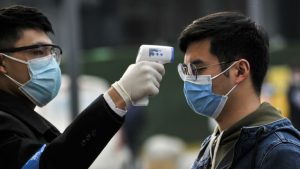We have lights at our front and back doors that we leave on all night. Our neighbors all do the same thing, trying to send a signal that says, “Robbers, stay away, because we’re in the house!”
Of course, during the pandemic, we’re always home, but even when the world was semi-normal, I don’t know that keeping those bulbs on from dusk to dawn served as any kind of deterrent. They merely served as a security façade.
I thought of this as I read yet another story of businesses (restaurants, casinos, airports, office buildings) that, in an attempt to reduce the spread of COVID-19, are taking the temperature of people at their entrances. Their logic is that if you have a fever, that could be an indicator you have the coronavirus, so you can’t be admitted. But, just as the lights outside my house don’t necessarily mean we’re really here, those temperature tests have little to do with reality.
First of all, it’s unlikely anyone with a fever high enough to be measured by a hand-held electronic thermometer (over 101 degrees) is going out in public. Secondly, the lack of a fever does not mean you don’t have COVID-19. In fact, much of the spread of the virus is from people without an elevated temperature, who feel fine and are otherwise asymptomatic. Thus, allowing entry for someone whose forehead radiates a “normal” 98.6 degrees neither prevents the spread of the disease, nor protects the workers and other customers inside.
As with the airlines’ promises to clean their planes thoroughly between flights — which they’re not really doing — the temperature checks are an ineffective strategy being wrongly promoted as reassurance those venues care about safety. The same results could be achieved by putting up signs that say, “Virus, stay away!”
And leaving the lights on, of course.

